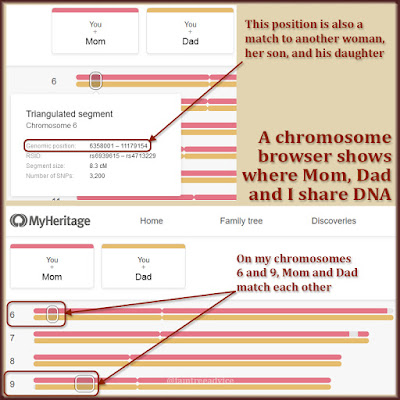Have you used MyHeritage's Deep Nostalgia tool to animate photos of your ancestors? I did a handful. Only one made me cry.
My great grandmother, Maria Rosa Caruso, was one tough little woman. Even in her youth, she was very broad. She looked like a wrestler compared to my great grandfather, Pasquale Iamarino.
My idea of Maria Rosa changed when I received some old photo albums belonging to my late aunt. There were several dashing photos of Pasquale. And one lovely portrait of Maria Rosa before she married. She was still a very sturdy woman, but I could see that she was beautiful.
I had already used MyHeritage to colorized her portrait. The colors were garish, but I adjusted them in Photoshop for a very nice finished product.
I uploaded the full-length portait into the Deep Nostalgia tool. When I saw the result, and young Maria Rosa smiled and looked at me, I broke down and cried. I loved her! The only time I met her, I was too young to really remember. Seeing her move and smile with her pretty eyes, I felt as if she were reaching out to me. (See the animation below.)
Since then, I've been concentrating my family tree-building efforts on Maria Rosa's branch. She and Pasquale are my only pair of great grandparents who met in America. They were not from the same town in Italy. They were set up by Maria Rosa's brothers who worked for the Erie Railroad with Pasquale. They sent for their sister, who arrived in New York in July. Four months later, she married Pasquale.
Targeting the Search
Sitting on my computer are all the available vital records from her hometown in Italy. I printed out a fan chart of all her ancestors to make it clear what I have and what I need to find.
I've already used the vital records to identify:
- her parents and siblings, including her stillborn twin, Luca
- her 4 grandparents
- her 8 great grandparents
- her 16 2nd great grandparents
Those 16 are my 5th great grandparents, so I'm doing pretty well. I've also identified:
- 16 of her 32 3rd great grandparents
- 1 of her 64 4th great grandparents, born about 1719
It's her missing 3rd great grandparents that I'd love to find. All were born in the early 1700s, and the vital records begin in 1809. They most likely died before 1809.
So how did I find 16 of them? The answer lies with the younger generation(s).
- The death record of the eldest person on any branch of your family tree should name their parents.
- A marriage record can include death records for the bride and groom's parents. If the groom's father is dead, you may find his father's death record. That takes you back another generation.
 |
| Inspired by her smile, I'm setting to work on great Grandma Maria Rosa's family tree. |
Digging Deeper
I've been renaming thousands of vital records from Maria Rosa's town. I'm including the name of the person and their father's first name. This makes every file searchable on my computer. I've finished all the birth and death records. I've finished the marriage records, but not the records go with the marriages.
It's these extra records that may hold the names of Maria Rosa's missing ancestors. With her fan chart beside me, I plan to continue renaming the records, looking for the names I need. I'm up to 1824, and the marriage records end in 1860. The end is in sight!
I found the 1809 death record for my 6th great grandfather, Tomaso Guerra. I'm very disappointed that it didn't mention his mother's name. That's why I have only 1 of Maria Rosa's 4th great grandparents. He's my 7th great grandfather, Nicola Guerra.
Following a Road Map
If your genealogy software lets you, I recommend printing a targeted fan-chart. Use it to focus on a particular dead end or neglected branch in your family tree. It's possible the answer is out there, but you haven't gotten serious about searching.
I spend most of my time connecting all the families from Pasquale Iamarino's hometown. Three of my great grandparents were born there, along with almost all their ancestors.
Then that eerie, creepy Deep Nostalgia technology brought Maria Rosa front and center.



